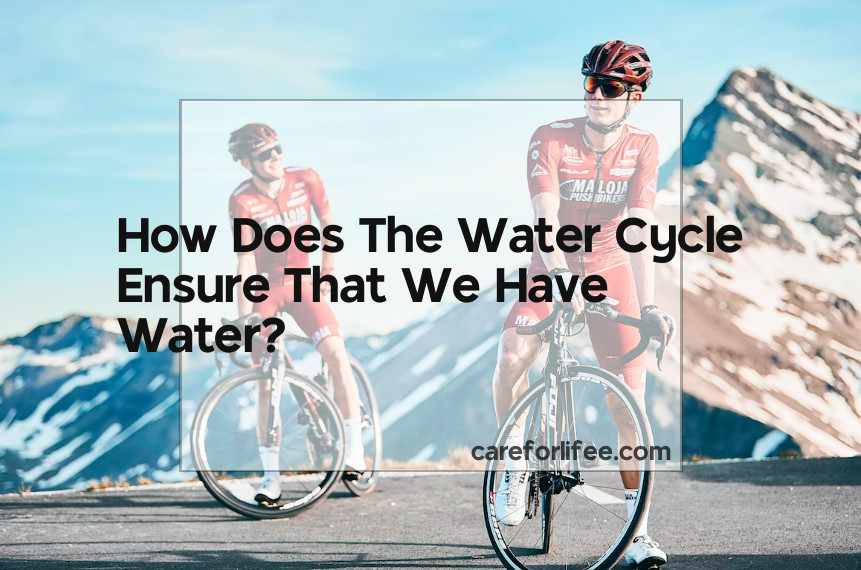How Does The Water Cycle Ensure That We Have Water?
The water cycle ensures that we have water by recycling water back into the atmosphere.
The water cycle is the process by which water circulates through the Earth’s atmosphere, land, and oceans. The water cycle is powered by the sun, which evaporates water from the Earth’s surface and drives the atmospheric circulation that transports water vapor around the globe. Precipitation falls from the atmosphere and replenishes the water in lakes, rivers, and aquifers. The water cycle is essential to life on Earth and ensures that we have water to drink, to grow our food, and to support ecosystems.
How Does The Water Cycle Ensure That Water Is Continually Cycled Through The Earth’s Systems?
The water cycle is the process of water moving from the Earth’s surface to the atmosphere and then back to the surface.

The water cycle is one of the most important processes on Earth. It is the process that ensures that water is continually cycled through the Earth’s systems.
The water cycle has four main stages: evaporation, condensation, precipitation, and collection.
1. Evaporation: Water evaporates from the surface of the Earth, into the atmosphere.
2. Condensation: Water vapor condenses into clouds.
3. Precipitation: Precipitation falls from the clouds back to the surface of the Earth.
4. Collection: Water is collected on the surface of the Earth, in lakes, rivers, and oceans.
The water cycle is a never-ending process, and it is this constant cycling of water that makes life on Earth possible.
How Does The Water Cycle Ensure That The Earth Has A Fresh Supply Of Water?
Water evaporates from the oceans, rises into the atmosphere, and falls back to Earth as rain or snow.
The water cycle is the process that ensures the Earth has a fresh supply of water. It’s a continuous loop that starts with evaporation, where water vapor rises into the atmosphere and eventually condenses into clouds. These clouds eventually release precipitation in the form of rain, sleet, or snow, which falls back to the surface of the Earth. Some of this water will seep into the ground, where it will be stored in aquifers, while the rest will flow back into rivers and lakes. The water cycle will then start over again as this water evaporates back into the atmosphere.
While the water cycle is a continuous process, it’s not always happening at the same speed. For example, evaporation typically increases during the summer months as the air is warmer and there is more sunlight. This increased evaporation leads to more precipitation, which can help alleviate droughts. The water cycle is also affected by human activity, such as when we use large amounts of water for irrigation or when we pollute rivers and lakes.
The water cycle is an important process that helps to keep the Earth’s supply of fresh water clean and replenished. Without it, we would quickly run out of this vital resource.
FAQ
How Does The Water Cycle Help To Regulate The Earth’s Climate?
The water cycle begins with evaporation. Evaporation is the process of water turning into vapor and rising into the atmosphere. The water vapor then condenses and falls back to the surface of the Earth as precipitation. Precipitation can take the form of rain, snow, sleet, or hail. Once the water reaches the surface of the Earth, it begins to evaporate again.
The water cycle is important to the Earth’s climate because it helps to regulate the Earth’s temperature. The sun heats the water on the surface of the Earth, which causes the water to evaporate. The water vapor then rises into the atmosphere and condenses, which releases latent heat. This latent heat warms the atmosphere and helps to regulate the Earth’s temperature.
How Does The Water Cycle Ensure That Water Is Available For Plants And Animals?
The water cycle is the process that ensures that we have water.







